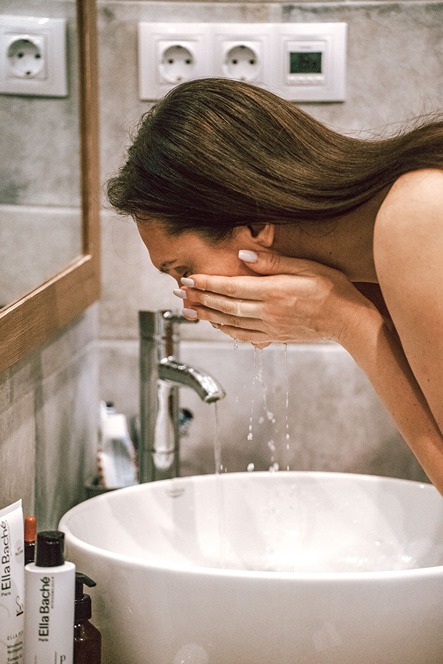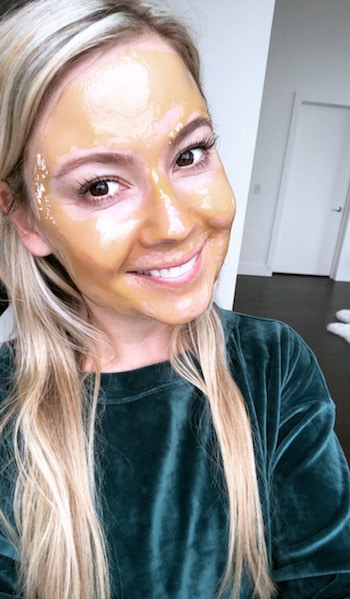Milia Explained
Milia spots around your eyes might not look pretty, but they’re nothing to be concerned about. Indeed, these benign bumps are quite common and usually clear up within a few weeks if you leave them alone. There are also many effective at-home remedies and precautions you could take to reduce the severity and frequency of milia.
In this piece, we’ll explain exactly what milia bumps are and how you could combat them. Armed with this knowledge, you should have no issues dealing with these spots in the future.
What Is Milia?
Basically, milia are tiny bumps that can appear on your eyelids, around your eyes, on your cheeks, or on your forehead. It’s most common to find Milia on an infant’s eyelids, but people could develop this skin condition at any age.
Scientists believe milia form after a naturally-occurring protein called keratin gets stuck in the skin’s outermost later. In addition to the skin, keratin can be found in our hair and nails. Exactly why milia tend to form on or around the eyelids remains a mystery, but it might be because the sun has a stronger effect on this area.
Indeed, milia are most often a healing reaction to excessive sun exposure or burns. Other common reasons milia could form include aggressively wiping your face and allergies.
These pin-sized bumps are usually white or yellow in colour and hard. While they might feel uncomfortable as you press against them, you shouldn’t experience pain or notice redness around the Milia. If you leave them alone to heal, then Milia will not leave scars on your skin.
Is Milia Acne?
Many patients understandably confuse Milia with facial acne. Although these milia spots look like whiteheads, they do not contain pus nor will they cause skin inflammation.
As mentioned above, milia are usually the result of keratin that gets stuck in the skin’s outermost layer. Trapped proteins could also trigger pimples, but acne is usually the result of internal factors like hormonal imbalances, diet issues, and psychological stress. If you notice facial redness and/or inflammation, then you know you’re not dealing with milia.
Just because milia and acne are different, however, doesn’t mean they don't share a few similarities. Indeed, many of the same remedies used to combat milia could be used in an acne treatment protocol.
Home Remedies For Milia
There’s no need to “treat” Milia. As long as you leave these little dots alone, they should disappear within a few weeks.
For those who want to speed up the milia recovery process, however, try a few of these safe home remedies.
Wash Your Face Twice Per Day

Getting into a daily skincare routine could work wonders for your milia. Try to get in the habit of washing your face with lukewarm water first thing in the morning and right before bed. You could also use a mild soap a few times per week to help unclog your pores.
Be sure to always gently pat your face dry with a clean towel. Rubbing your face too aggressively will only make your milia situation worse.
People with more serious cases of milia might want to experiment with cleansing lotions or exfoliating machines. Be careful not to use too many heavy lotions on your face, as these tend to clog up pores.
Make A Honey Face Mask

Packed with anti-aging antioxidants and antibacterial properties, raw honey is a superfood for your skin. Making a face mask with raw honey once or twice per week is one of the easiest ways to exfoliate your skin in the comforts of your home.
After getting out of a warm shower, take about ½ teaspoon of honey and rub it around your milia. Let this honey sit for about 10-15 minutes before washing it off with lukewarm water and patting dry.
If you have some money to splurge, then consider upgrading to a bottle of manuka honey. Laboratory tests show this honey, which is only produced by bees in New Zealand, has an extremely high concentration of healing compounds. While manuka honey is expensive, it’s one of the most potent remedies for milia, acne, and other skin disorders.
Mash Up Some Fruit
Sometimes estheticians recommend using the compound salicylic acid to get rid of stubborn milia. This exfoliating substance, however, is more often prescribed for the treatment of plantar warts, birthmarks, and calluses.
Before spending extra money on salicylic acid medication, consider mashing a few fruits that are high in this compound and applying them to your face. Here are a few of the best sources of salicylic acid:
• Cucumbers
• Strawberries
• Tomatoes
• Cantaloupe
Place one of these fruits over your milia for about 15 minutes once or twice per week. However if you do notice a rash or have itchy skin, you could have a salicylate sensitivity so make sure to do a patch test to start.
Preventing Milia
Yes, it’s important to know what to do when you have milia, but wouldn’t it be nice to never develop these bumps in the first place? Thankfully, there are many easy ways you could significantly reduce your risk of having to deal with milia.
Avoid Too Much Sun
Bad news for sunbathers: the longer you’re exposed to the sun, the higher chance you have of developing milia. Since our eyelids are so thin, they lack natural protection from the sun’s UV rays. Recent estimates show that about 5-10 percent of all skin cancers occur on the eyelid.
If you’re going to spend hours on the beach, then be sure to apply the best-quality sunscreen you could find all around your face. People who are prone to milia might want to invest in an all-natural sunscreen that’s free from harsh additives.
Also, always wear UV-blocking eyewear when you are outside. Even if the sun’s not out, you’re still being exposed to UV rays.
Don’t Touch Your Face
No matter how tempting it is to rub your eyes, it’s far better for your complexion to avoid developing this habit. Every time you touch your face, you’re exposing your skin to oil, grime, and even bacteria. Is it any wonder people who have this habit are more prone to milia and acne breakouts?
Not only is rubbing your eyes bad for Milia, it can also do serious damage to your cornea. Over time, people who aggressively rub their eyes can develop corneal scars and/or damage their retinal blood vessels.
A good alternative to scratching your eyes with your hand is to place a clean, wet towel over your eyes. You could also use re-wetting drops to get rid of any eye discomfort.
Check For An Allergic Reaction
Sometimes Milia could be due to an allergic reaction to a moisturizer, makeup product, or medication. This is most common with any heavy lotions that you apply directly to your face.
If you suspect a beauty product or moisturizer is causing your face to break out in spots, then stop using it for a few weeks and see how your skin reacts.
Of course, the only way to know for sure if you have an allergy is to see a dermatologist. It's advised not to stop any medications you believe are causing your milia flare-ups until you speak with a doctor.
Side Note: Can Stress Cause Milia?
Although there’s no research specific to milia, many skin conditions are triggered by psychological stress. Scientists aren’t exactly sure why this is the case, but they believe heightened stress levels increase oil production, which usually results in clogged pores.
Even if there’s no direct link between anxiety and milia, getting your stress levels under control couldn’t hurt. A good way to squash stress is to schedule a few minutes every day to practice seated meditation. People who regularly exercise are also less prone to suffer from anxiety.
A few other powerful relaxation strategies include listening to soothing music, taking Epsom salt baths, and practicing Tai Chi.
Surgical Options For Milia
Usually, surgery is not recommended for patients with milia. However, if your milia bumps are really annoying you, then book an appointment with a certified dermatologist to explore possible treatments.
One popular therapy your dermatologist might suggest is known as cryotherapy. During this procedure, a surgeon will get rid of the milia bumps by applying liquid nitrogen to your skin. While this therapy is fairly common with milia on the cheeks, it’s not generally recommended for patients with milia very close to their eyes.
Some doctors could use lasers to smooth out patches of milia under the eyes or on the cheeks. Your dermatologist might also suggest a few dermabrasion sessions to help exfoliate the skin.
It’s important to note that all surgical procedures carry some risk of scarring. Please discuss all potential complications with your dermatologist before booking a procedure.
Speak With A Doctor About Managing Your Milia
Anyone who’s struggling with milia spots should know that they aren’t alone. Although these bumps are unsightly, they are common and can often be treated with at-home remedies. Give the simple strategies listed above a try and see how well your milia clears up within a few weeks. If you’re still having issues with your milia, then you should consider scheduling an appointment with a qualified dermatologist or esthetician.
Author: John Dreyer Optometrist Bsc(Hons), MCOPTOM, DipCLP
Created: 15 May 2023, Last modified: 9 Nov 2024

